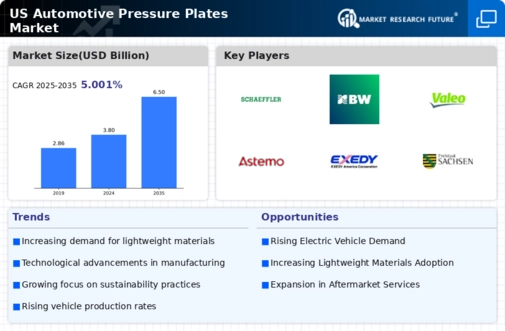The US Automotive Pressure Plates Market is characterized by a dynamic landscape where competition is driven by advancements in technology and the rising demand for efficient vehicle components. Various factors contribute to the market's competitiveness, including innovations in material science, changes in consumer preferences towards high-performance vehicles, and regulatory standards promoting better fuel efficiency and lower emissions. As major automotive manufacturers seek to enhance their vehicle offerings, the demand for high-quality pressure plates that can withstand extreme conditions and provide reliable performance continues to grow.
This competitive environment is further shaped by the presence of both well-established players and emerging companies that are striving to carve out their niche in the market.Schaeffler stands out in the US Automotive Pressure Plates Market due to its advanced technological capabilities and a strong focus on research and development. The company offers a comprehensive range of precision-engineered products designed specifically for automotive applications, including pressure plates that meet stringent quality standards. Schaeffler's commitment to innovation is evident in its ongoing investments in technology and the development of new materials that enhance the performance and durability of its products.
Additionally, the company benefits from a robust distribution network in the US, allowing it to effectively serve a diverse customer base that includes both OEMs and aftermarket retailers. This strategic positioning, alongside a reputation for high-quality manufacturing and customer service, strengthens Schaeffler's competitive edge in the market.BorgWarner also plays a significant role in the US Automotive Pressure Plates Market, leveraging its extensive expertise in performance components and drivetrain technologies. The company provides a variety of pressure plates that are integral to modern transmission systems, focusing on enhancing fuel efficiency and overall vehicle performance.
BorgWarner's market presence is bolstered by its reputation for innovation, particularly in developing solutions that align with evolving automotive trends, such as electric and hybrid vehicles. The firm has achieved notable growth through strategic mergers and acquisitions, expanding its portfolio and allowing it to offer a broader range of products tailored to meet the needs of automotive manufacturers in the US. Their commitment to sustainable practices and investment in advanced manufacturing processes positions BorgWarner as a key player capable of responding effectively to market demands and challenges.





















Leave a Comment